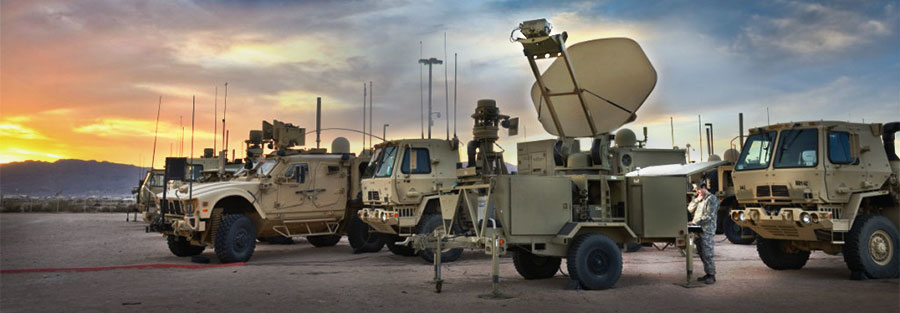Co-Creating the “Art of the Possible”
General Dynamics Mission Systems innovates the innovation process
“Without comms, we’re done.” This statement made by U.S. Army Sergeant Martha Montes, succinctly yet powerfully, expresses how crucial a real-time, secure communications network backbone has become to ensure both the safety and lethality of the U.S. Army’s force of the future.
As a developer of mission-critical C4ISR solutions, General Dynamics Mission Systems is keenly aware of the responsibility the company carries to deliver reliable, adaptable and secure products and services to customers. The company provides command, control, communications, intelligence, surveillance and reconnaissance products and systems to support the armed services, federal civilians and law enforcement personnel worldwide.
To assure their solutions consistently meet end users’ exacting requirements, General Dynamics Mission Systems, a business unit of General Dynamics, operates a pioneering crowdsourcing platform called the EDGE Innovation Sourcing Network™ (ISN). EDGE is a virtual network with a full suite of online tools, designed to enable the supply chain team to more effectively collaborate with both existing and emerging suppliers, customers and academia in order to secure access to the most technically superior, game-changing technologies available.
“Our customers and expect and require the latest and greatest technologies in their hands when they need to execute their missions,” said Sheila Lucas, manager of General Dynamics Mission Systems’ EDGE ISN.
Information is power and putting a catalog of supplier capabilities into the hands of our technical teams early in the development cycle ensures we can solve the toughest security and technology challenges facing our customers.
The Imperative
General Dynamics Mission Systems first launched its EDGE Innovation Network in 2006 as a proof of concept for open collaboration. At the time, the U.S. military was in the midst of battling Iraq in the first “network-centric” warfare in modern combat history. Though the networking technologies deployed during the early stages of the Iraq war clearly helped to save many lives, the overwhelming tactical and safety advantages military leadership expected were not fully realized. Troops-from HQ to frontline infantrymen-needed more resilient network connectivity.
For General Dynamics Mission Systems, the EDGE network was an opportunity to lead the industry in the development of the cutting-edge technologies required to dominate in the age of the networked battlefield. “It was imperative that we stay connected in real time with commercial innovations from suppliers big and small,” said Lucas. “Information is power and putting a catalog of supplier capabilities into the hands of our technical teams early in the development cycle ensures we can solve the toughest security and technology challenges facing our customers by quickly identifying the right supplier with the right capability that can be integrated rapidly and flawlessly into a solution.”
Through the ensuing decade, the company continued to invest in the EDGE program, building Innovation Centers for rapid prototyping and technology development, upgrading its knowledge management system (KMS) database and analysis tools and evangelizing the program with suppliers.
The program grew steadily, but Lucas and her team felt a disconnect between the supply chain management strategy and technical teams. “We took a step back to assess our open collaboration model and realized we needed to better harness the data we have on our suppliers, and more effectively align and communicate this to the business,” Lucas explained. “We needed a different methodology and a different process to show that value and engagement with suppliers and bring suppliers’ technical visions and roadmaps into the business.”
Honing the EDGE
In 2017, Lucas and her team restructured the EDGE program, culminating with the rebranding of the program as the EDGE Innovation Sourcing Network. While efforts to integrate third parties into the innovation process can often prompt an outbreak of “not invented here” syndrome, the ISN team was able to avert this common resistance by embedding the collaboration model directly into the technical process.
“We didn’t ask them to radically change their methods, we adapted to be a part of their day-to-day process,” Lucas explained. “We made the process intuitive and dynamic, so that our internal people can see what we have going on, they can self-service. They can bring our team on as a resource and a partner with them.”
The EDGE systems are built to be user-friendly for both internal stakeholders and suppliers. Through the platform, suppliers can keep General Dynamics Mission Systems up to date on all their technical capabilities and planned development efforts. Ready access to this trove of supplier information assures the Mission Systems engineering and supply chain teams can more quickly align supplier competencies with engineering needs. “The process is lightweight to allow anyone who needs something technically to have access to our suppliers, while at the same time providing suppliers with the opportunity to share what their vision of the ‘art of the possible’ looks like,” said Lucas. “This early engagement also allows the supply chain team to leverage trusted supplier relationships to improve procurement efficiency.”
The process gives suppliers the opportunity to share what their vision of the ‘art of the possible’ looks like.
For more unique technical requirements, the ISN team can issue a “TechScout” request. Through TechScout, General Dynamics Mission Systems can share specific supply chain/technical opportunities and needs with ISN members. To ease the transition and encourage adoption among the company’s technical personnel, the TechScout process has been embedded into engineering’s common process framework at the point of the initial technical solution design. “This provides an entry point for potential and emerging suppliers that want to work with us, while affording the General Dynamics Mission Systems team the opportunity to nurture and develop emerging technologies with suppliers,” Lucas noted.
In conjunction with the program realignment, Lucas added that the TechScouts are now correlated one-to-one with various categories defined by General Dynamics procurement team, i.e. complex systems, components, electro-mechanical, interconnect, mechanical, services and IT hardware and software.
“In order to collaborate, you must communicate,” Lucas concluded. “Through the ISN, we now communicate bi-directionally with our suppliers and are opening connections and sustaining engagements between suppliers and our technical teams that are cost-effective and deliver impactful impressions of suppliers and their capabilities.”
Related Resources
- McKinsey Commentary: Creating an innovation culture
- Report: Better Supplier Engagement Could Help Drive Innovation
- Article: Can Aerospace and Defense Companies Meet Their Great Expectations?

